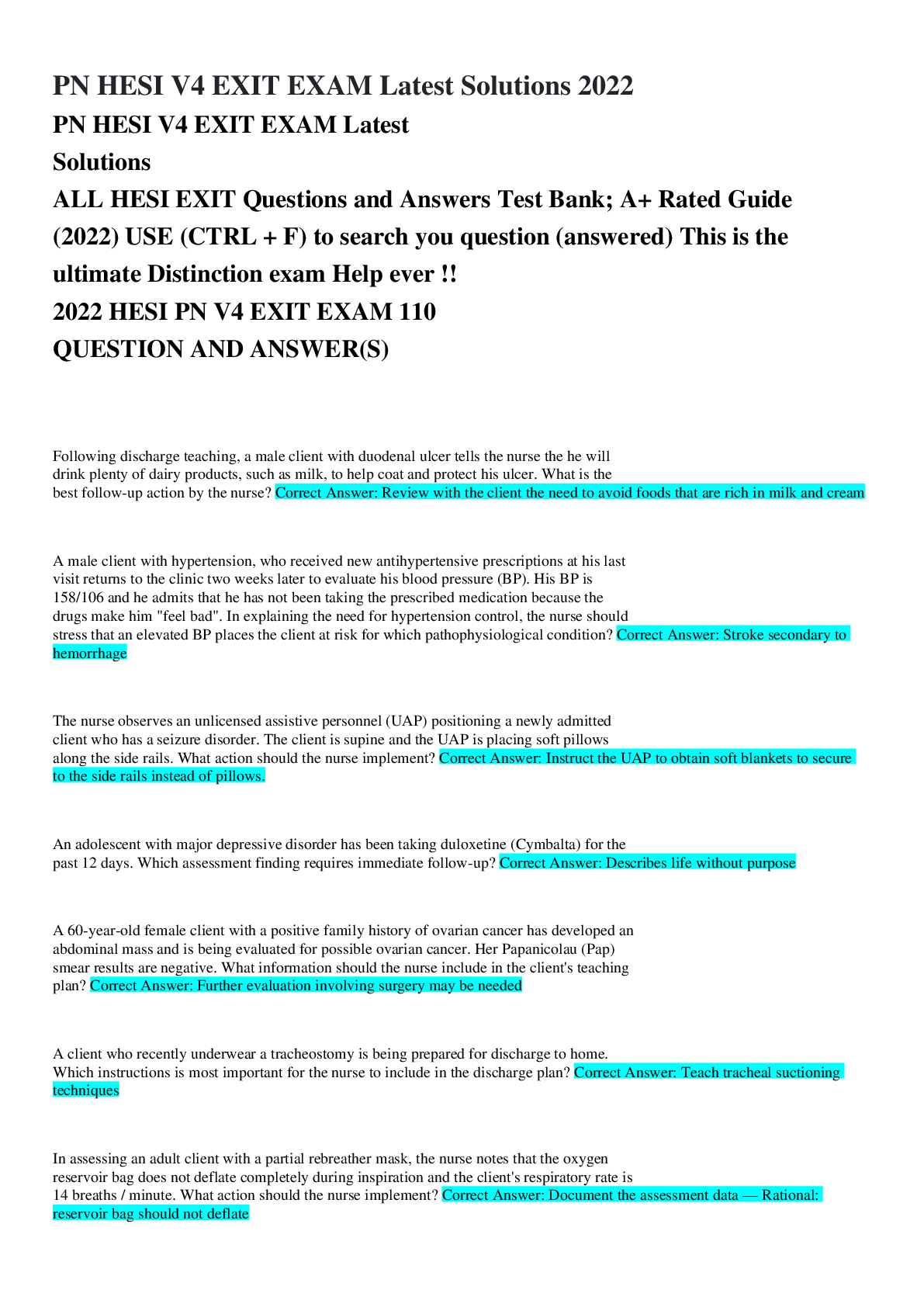NUR 396 Maternity review for exit exam Latest 2021/2022,100% CORRECT
Document Content and Description Below
NUR 396 Maternity review for exit exam Latest 2021/2022 Maternity Excessive blood loss increases risk of infection. The client should receive nothing by mouth while heavy bleeding continues, bec... ause surgical intervention may become necessary. Persistent occiput posterior positioning of the baby causes intense back pain, the result of fetal compression of the sacral nerves. Magnesium sulfate is used for preeclampsia and eclampsia. Antidote for magnesium sulfate is calcium gluconate STAGES OF LABOR First stage of labor Thinning (effacement) and opening (dilation) of the cervix During the first stage of labor, contractions help your cervix to thin and begin to open. This is called effacement and dilation. As your cervix dilates, your health care provider will measure the opening in centimeters. One centimeter is a little less than half an inch. During this stage, your cervix will widen to about 10 centimeters. This first stage of labor usually lasts about 12 to 13 hours for a first baby, and 7 to 8 hours for a second child.The first stage of labor has three parts: 1. Early labor Your cervix opens to 4 centimeters. You will probably spend most of your early labor at home. Try to keep doing your usual activities. Relax, rest, drink clear fluids, eat light meals if you want to, and keep track of your contractions. Contractions may go away if you change activity, but over time they'll get stronger. When you notice a clear change in how frequent, how strong, and how long your contractions are, and when you can no longer talk during a contraction, you are probably moving into active labor. 2. Active labor Your cervix opens from 4 to 7 centimeters. This is when you should head to the hospital. When you have contractions every 3 to 4 minutes and they each last about 60 seconds, it often means that your cervix is opening faster (about 1 centimeter per hour). You may not want to talk as you become more involved in dealing with your contractions. As your labor progresses, your bag of waters may break, causing a gush of fluid. After the bag of waters breaks, you can expect your contractions to speed up. Slow, easy breathing is usually helpful at this time. Focusing on positive, relaxing images or music may also be helpful. Changing positions, massage, and hot or cold compresses can help you feel better. Walking, standing, or sitting upright will help labor progress. Relaxing during and between contractions saves your energy and helps the cervix to open. 3. Transition to second stage Your cervix opens from 7 to 10 centimeters. For most women, this is the hardest or most painful part of labor. This is when your cervix opens to its fullest. Contractions last about 60 to 90 seconds and come every 2 to 3 minutes. There is very little time to rest and you may feel overwhelmed by the strength of the contractions. You may feel tired, frustrated, or irritated, and may not want to be touched. You may feel sweaty, sick to your stomach, shaky, hot, or cold. Although you may find slow, easy breathing to be most effective throughout labor, you may also find an uneven breathing pattern most helpful at this time. Second stage of labor Your baby moves through the birth canal:The second stage of labor begins when the cervix is completely dilated (open), and ends with the birth of your baby. Third stage of labor:After the birth of your baby, your uterus continues to contract to push out the placenta (afterbirth). The placenta usually delivers about 5 to 15 minutes after the baby arrives. Fourth stage of labor- Recovery: Baby and placenta is delivered. Frequent massage of the fundus and immediate breastfeeding will allow the uterus to contract and decrease bleeding. Observing the amount of lochia is a priority during the 4 hours after delivery because of the risk of hemorrhage, For patients with diabetes, they need to be induced early because blood glucose is hard to control after 37 weeks. The mother has moved into the taking-hold phase when she takes control and becomes actively involved with her infant and calls the infant by name. During the taking-in period the mother focuses on her needs rather than the baby's. During this period the mother needs to be "mothered" so she can assume the role of mother. There is an increased risk of tubal pregnancy with vitro fertilization embryo transfer (IVF-ET). IVF works by using a combination of medicines and surgical procedures to help sperm fertilize an egg, and help the fertilized egg implant in your uterus. vaginal wall generally done by a midwife or obstetrician. Episiotomy is usually performed during The antibodies in human milk provide the infant with immunity against all or most of the pathogens that the mother has encountered, these are called gamma globulins. A cephalhematoma is a collection of blood between the skull bone and its periosteum that results from trauma during birth. It resolves spontaneously in 3 to 6 weeks. The swelling of a caput succedaneum crosses the suture line because it is outside the periosteum. Phenylalanine, an essential amino acid necessary for growth and development, cannot be metabolized by infants with PKU; early diagnosis and treatment may prevent mental retardation. It is normal for newborn girls to have edematous breast and pink discharge and will resolve on its own. It is from moms hormones still being in the baby's system Jaundice occurs because of the expected physiologic breakdown of fetal red blood cells and the inability of the newborn's immature liver to conjugate the resulting bilirubin. Breast-fed neonates are more prone to physiologic jaundice because of diminished calorie and fluid intake in the 3 days before milk production reaches normal volume The outer heal is the best place to get a blood sample from a baby. Erythromycin ophthalmic ointment is used to treat gonorrhea and Chlamydia infections, which may be transmitted during birth. It is administered prophylactically. With a premature infant, the first 24 hours should include watching for respiratory distress. This can be common in premature infants. ORILISSA 200 mg is FDA approved for endometriosis. Cure for endometriosis is a hysterectomy and hormone therapy. endometriosis tissue feeds off of estrogen, so it gets worse The menstrual cycle starts with the first day of the period and ends when the next period begins. ● The follicular phase: The time between the first day of the period and ovulation. Estrogen rises as an egg prepares to be released. ● The proliferative phase: After the period, the uterine lining builds back up again. ● Ovulation: The release of the egg from the ovary, mid-cycle. Estrogen peaks just beforehand, and then drops shortly afterwards. ● The luteal phase: The time between ovulation and before the start of menstruation, when the body prepares for a possible pregnancy. Progesterone is produced, peaks, and then drops. ● The secretory phase: The uterine lining produces chemicals that will either help support an early pregnancy or will prepare the lining to break down and shed if pregnancy doesn’t occur. Menopause- no signs of period for one whole year. People with heart transplants need to wait one year before getting pregnant The ischial spine is the most narrow part of the pelvis. If the baby is stationed at 0 that means the baby is engaged into the ischial spine. +5 means the baby is crowning. May give pitocin after delivery to prevent hemorrhaging Locia is the discharge after birth. Moderate amount, red and no big blood clots. Assess how often the patient is changing her pad, if needing to change it too often could be a sign of hemorrhaging. Checking the fundus- making sure its midline, firm, at the bellybutton and the nurse will check it every 15 minutes for the first hour then every 30 minutes for 2 hours. If something is wrong have [Show More]
Last updated: 2 years ago
Preview 1 out of 12 pages
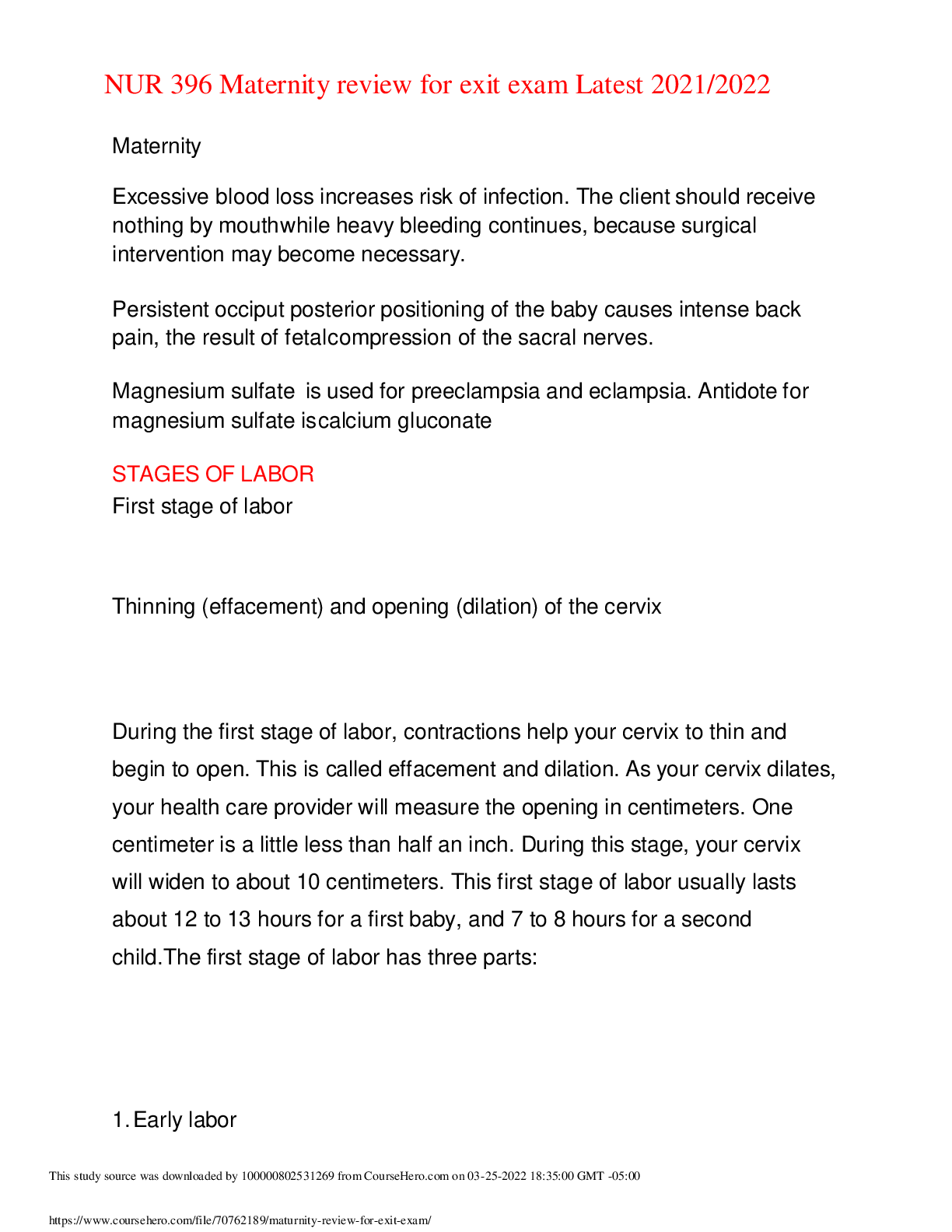
Buy this document to get the full access instantly
Instant Download Access after purchase
Buy NowInstant download
We Accept:

Reviews( 0 )
$10.00
Can't find what you want? Try our AI powered Search
Document information
Connected school, study & course
About the document
Uploaded On
Apr 17, 2022
Number of pages
12
Written in
Additional information
This document has been written for:
Uploaded
Apr 17, 2022
Downloads
0
Views
91


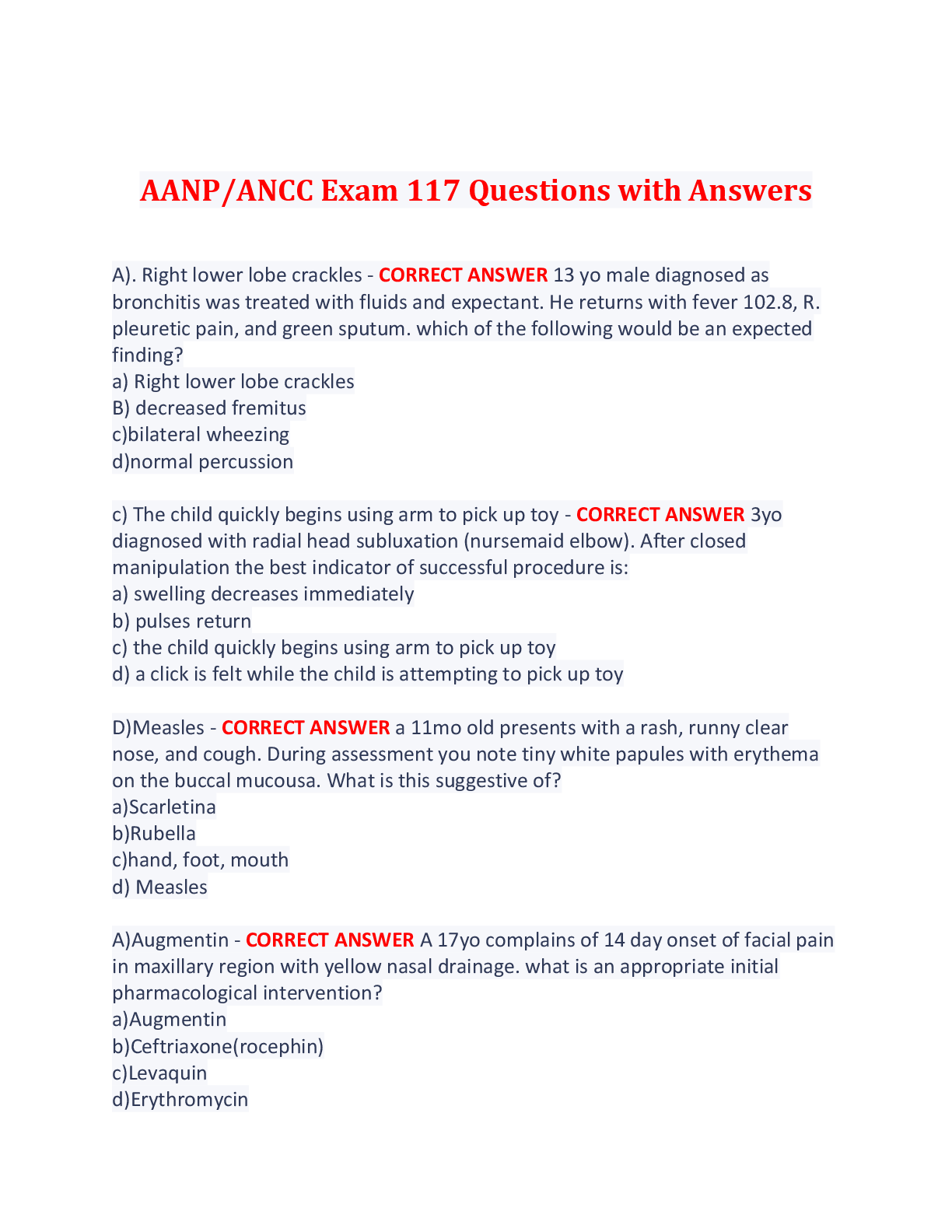

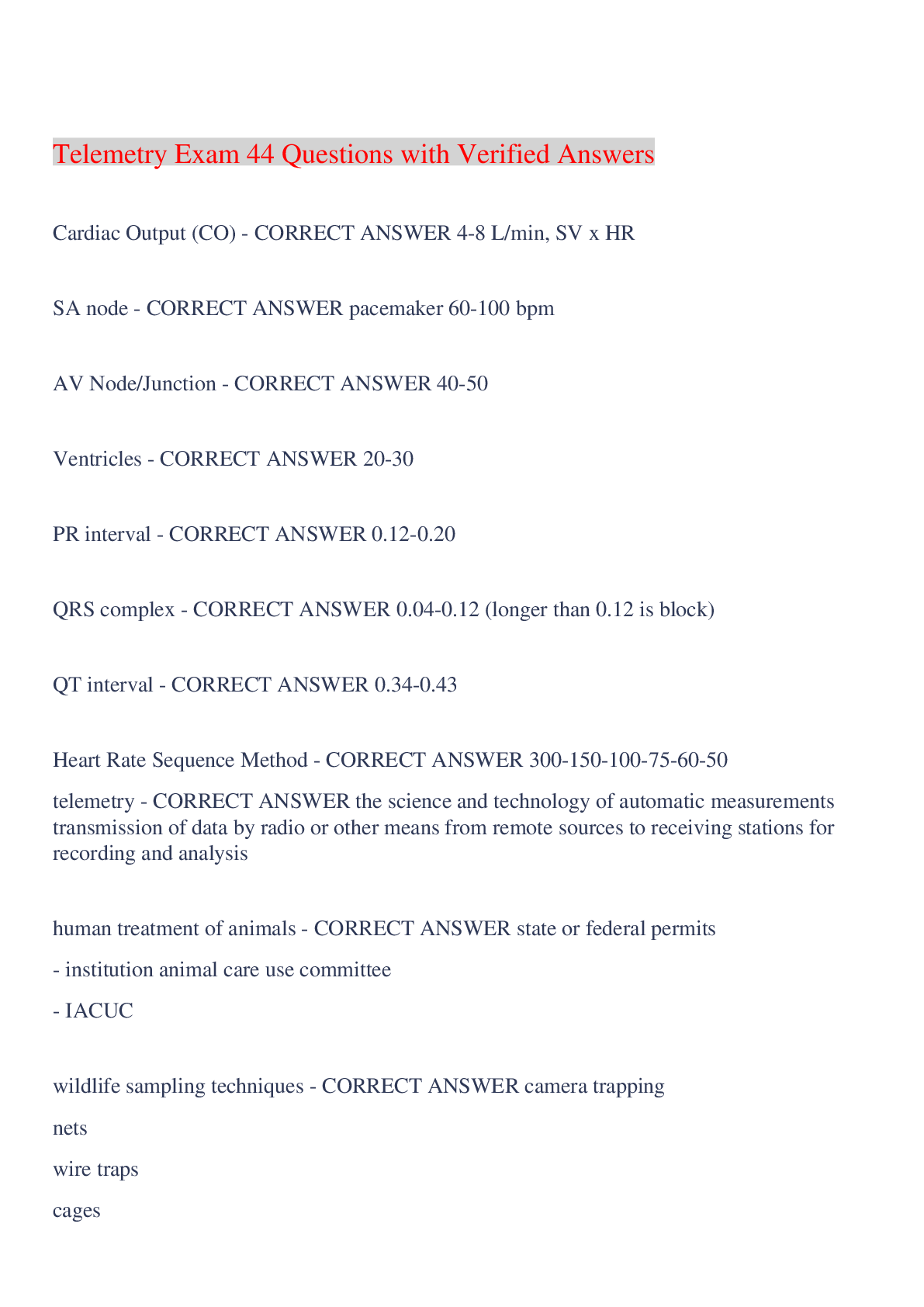
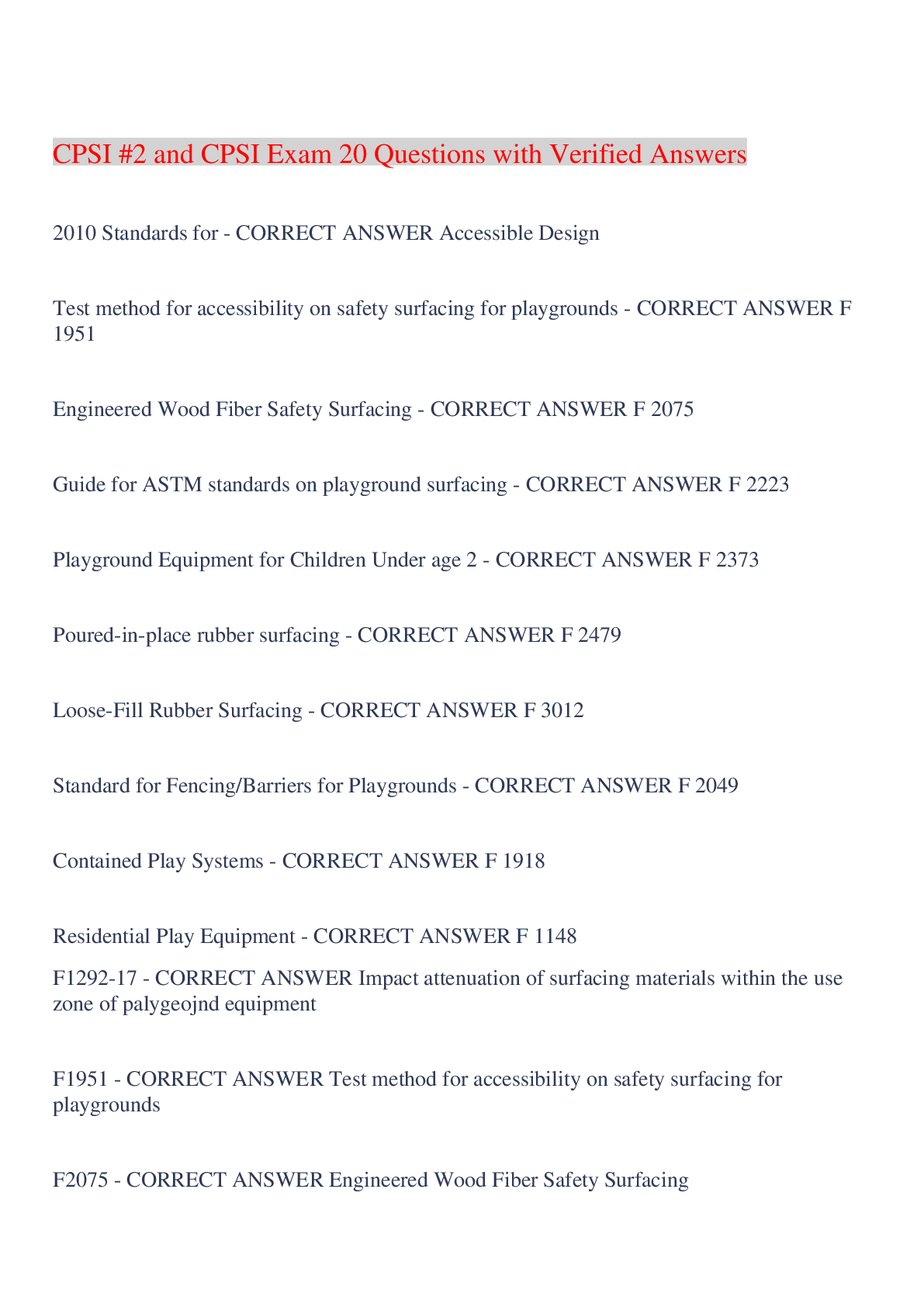
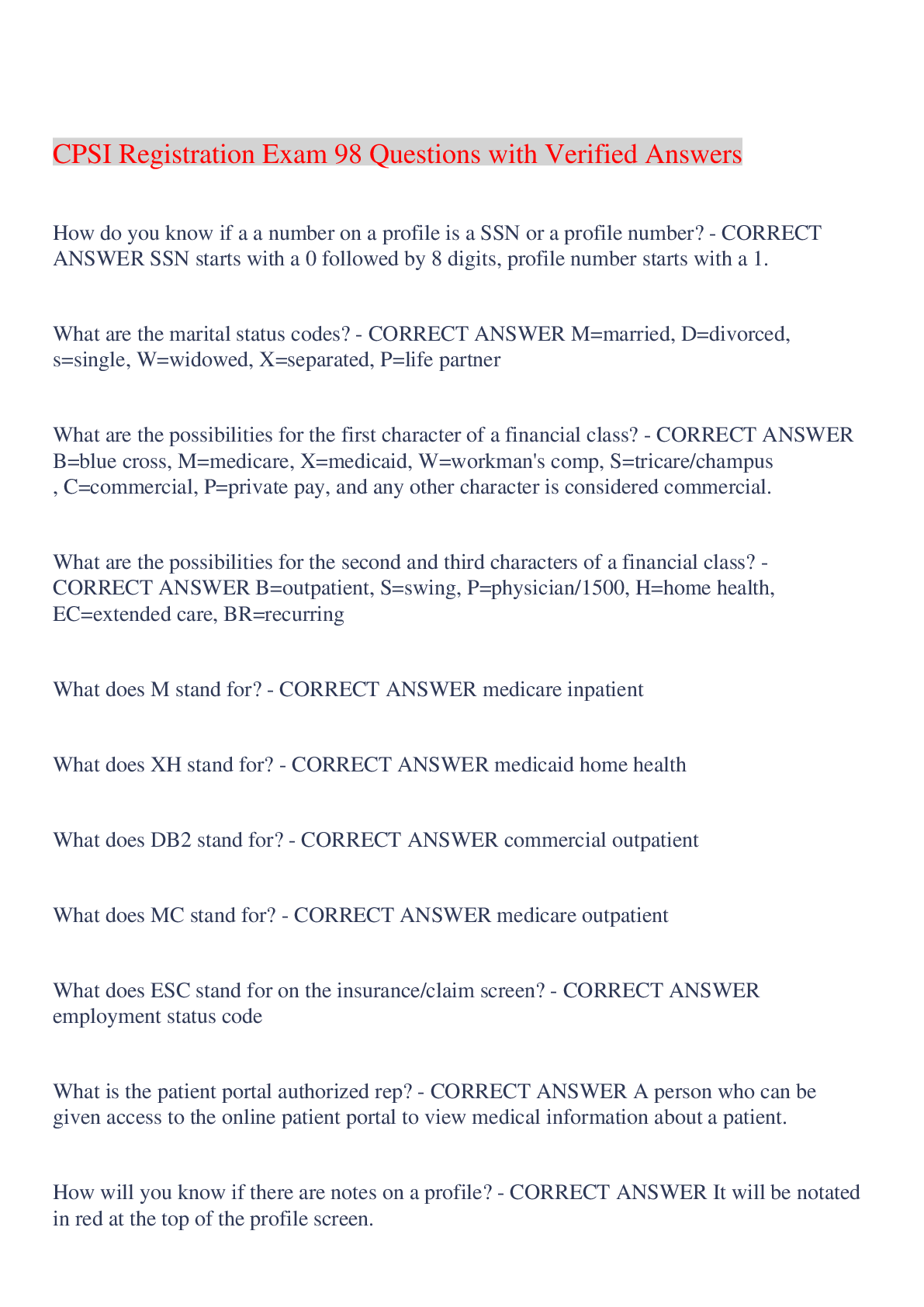
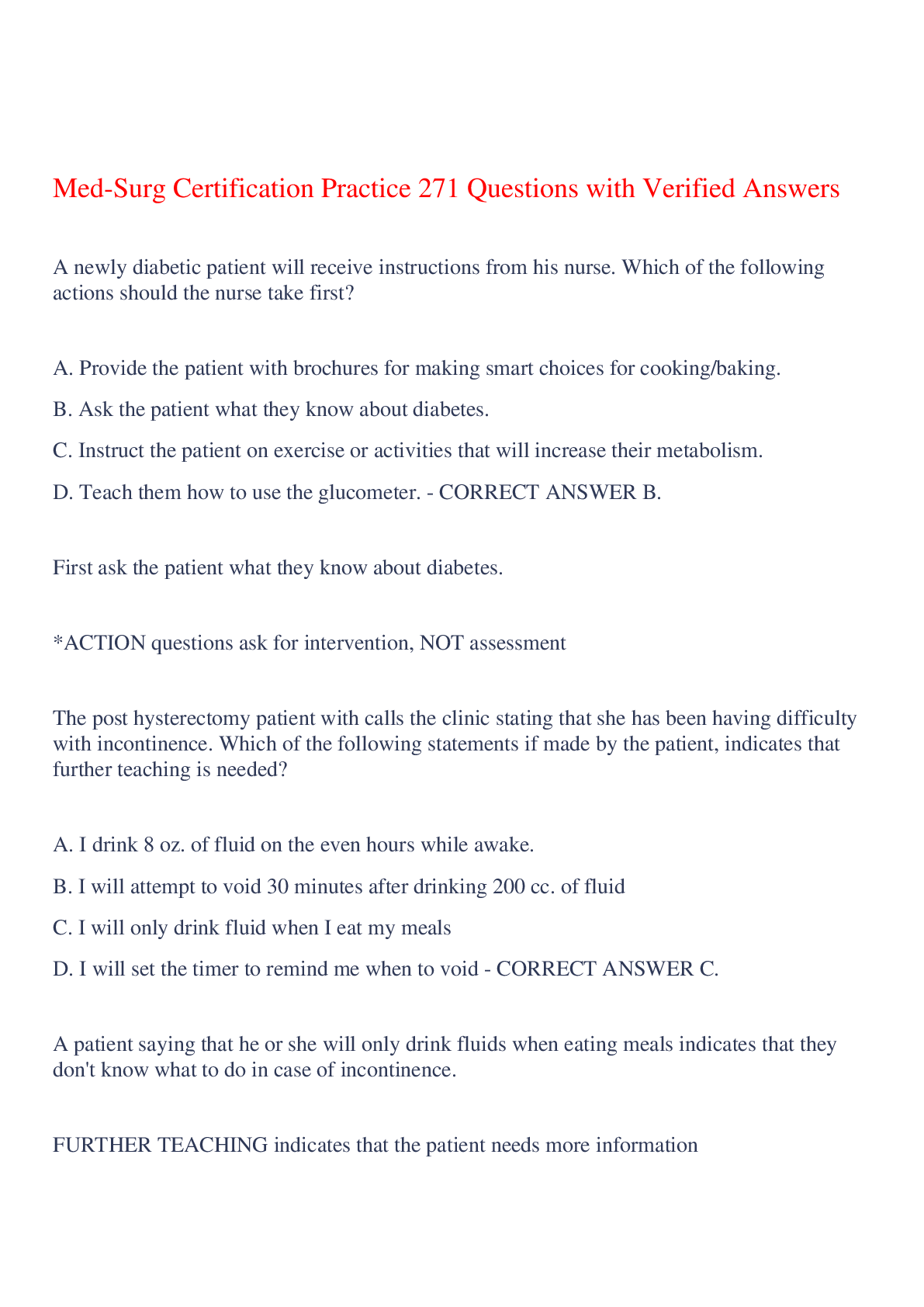



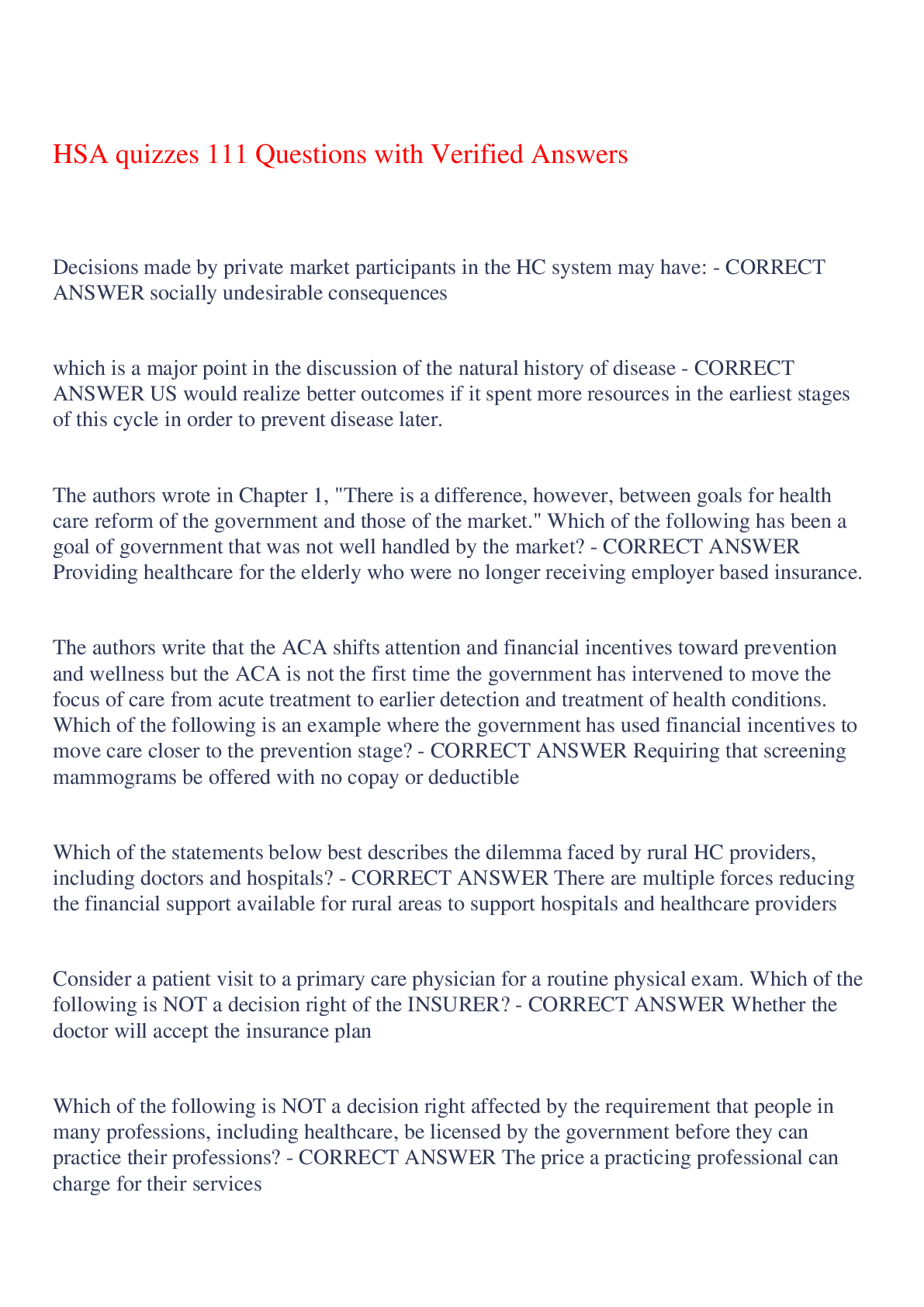
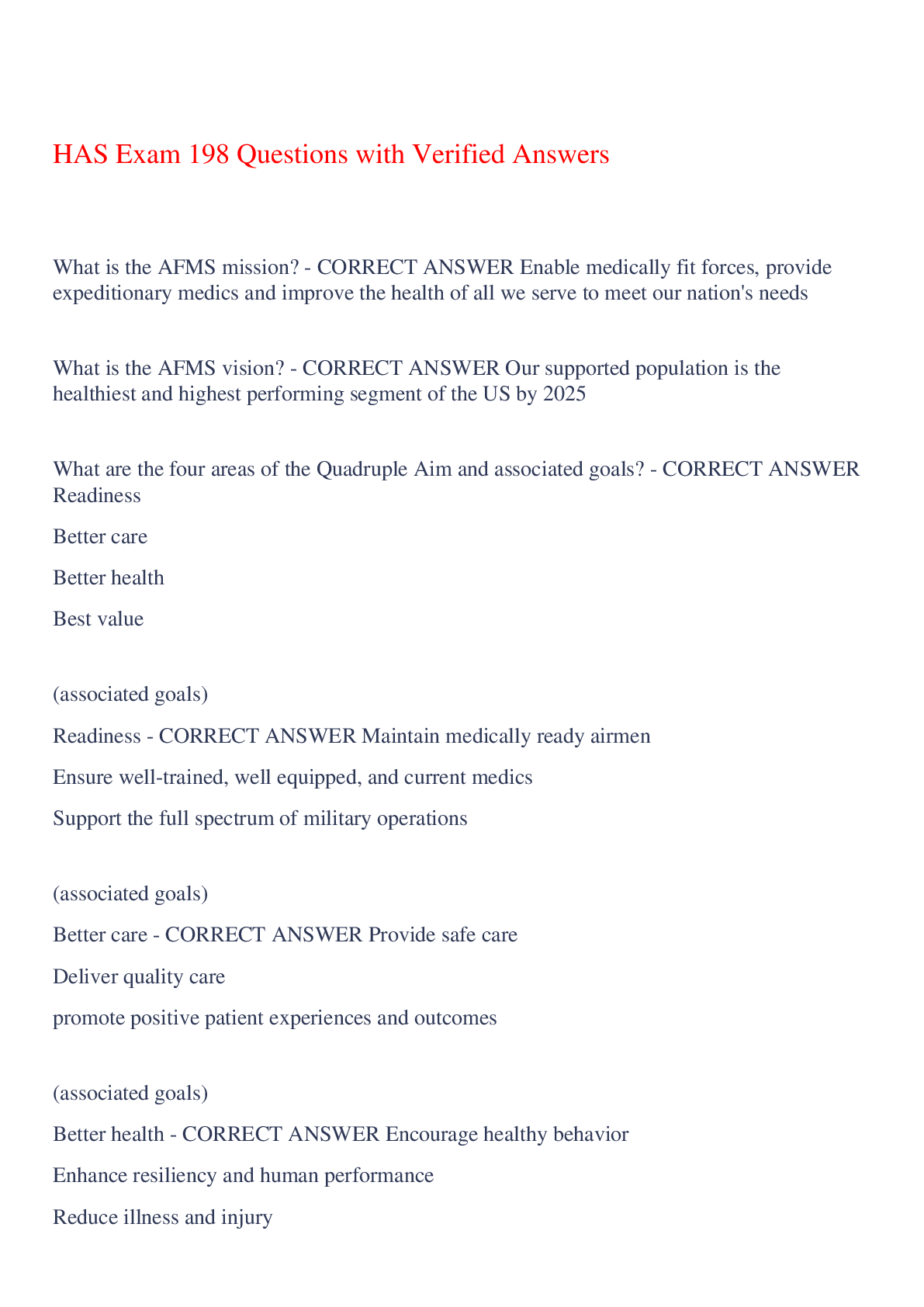

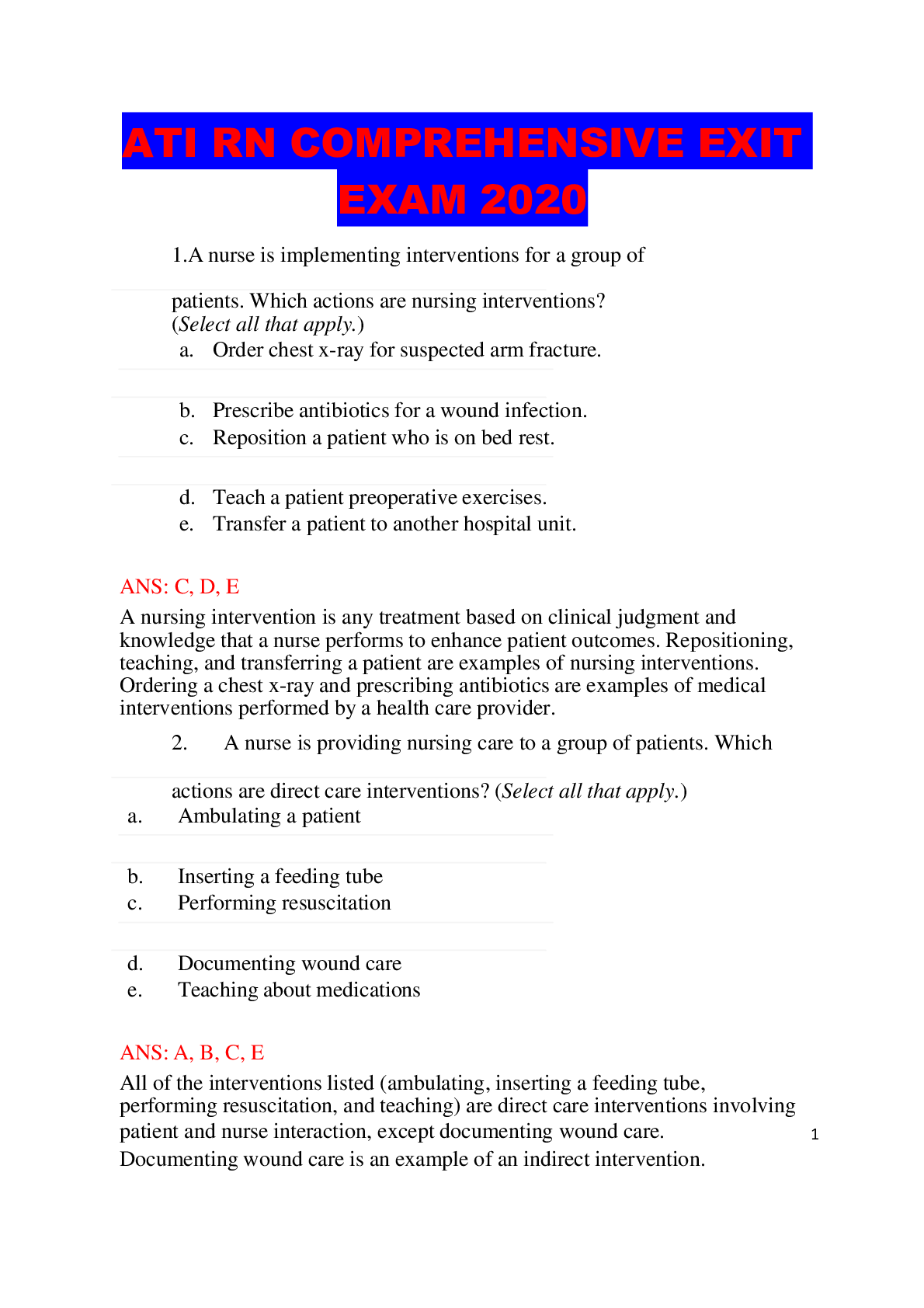
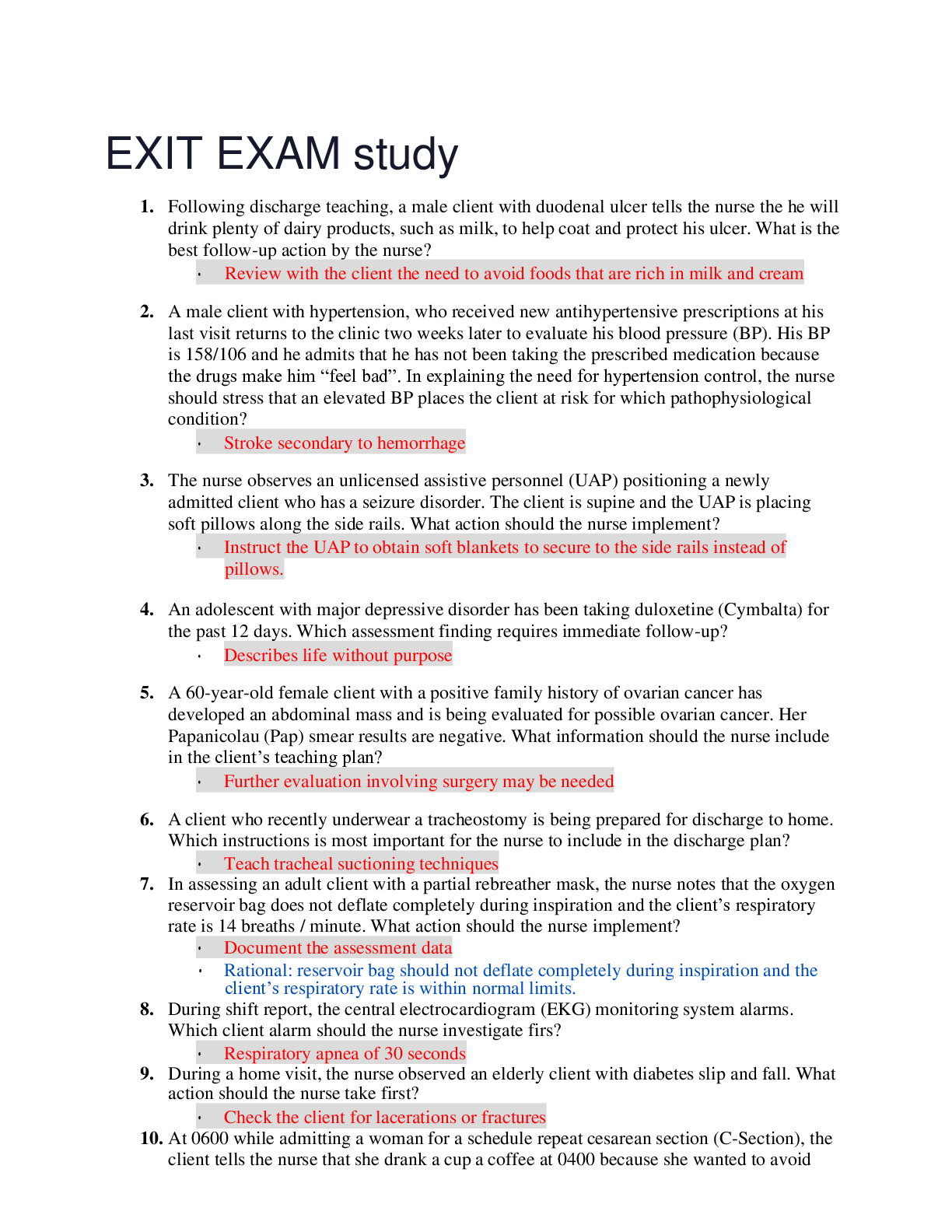

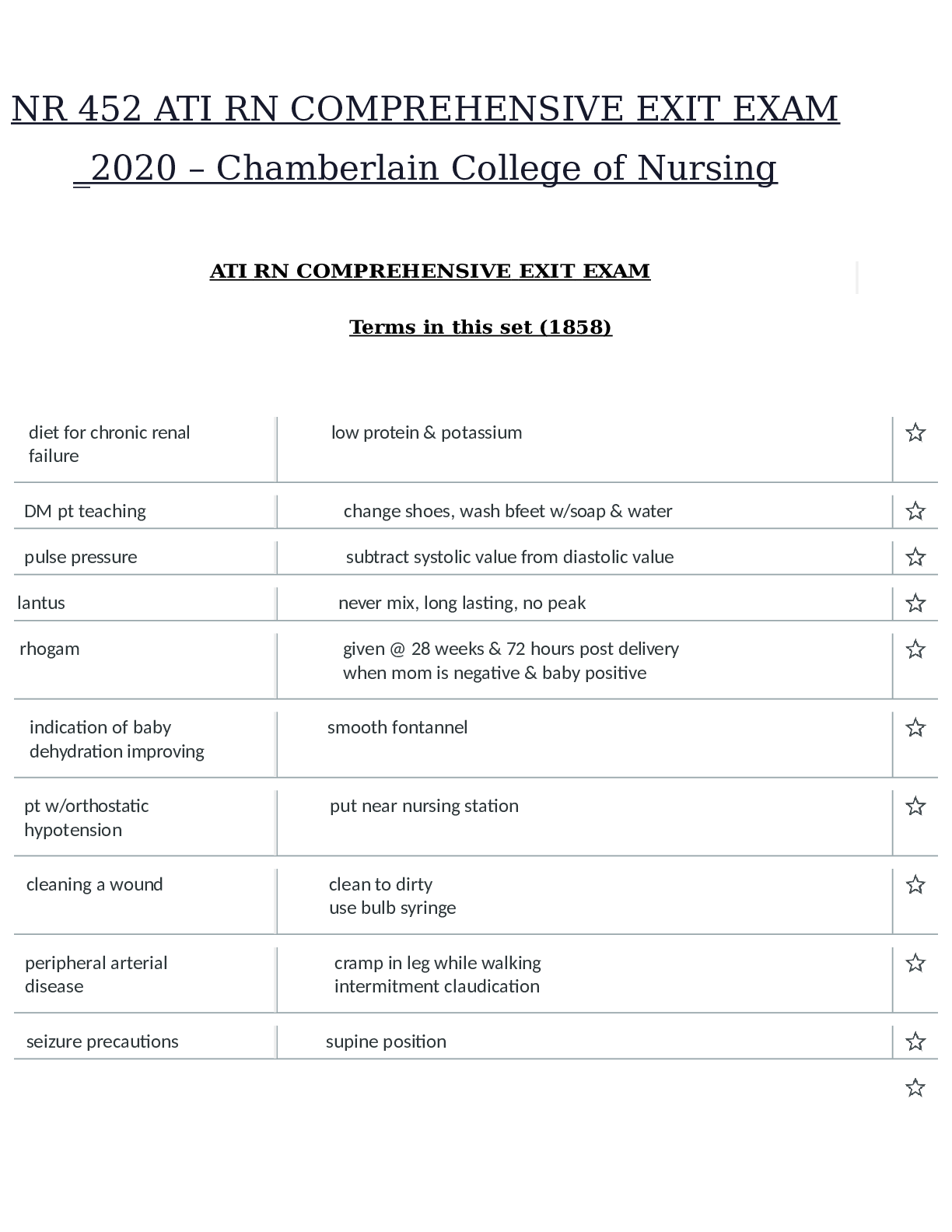
.png)
